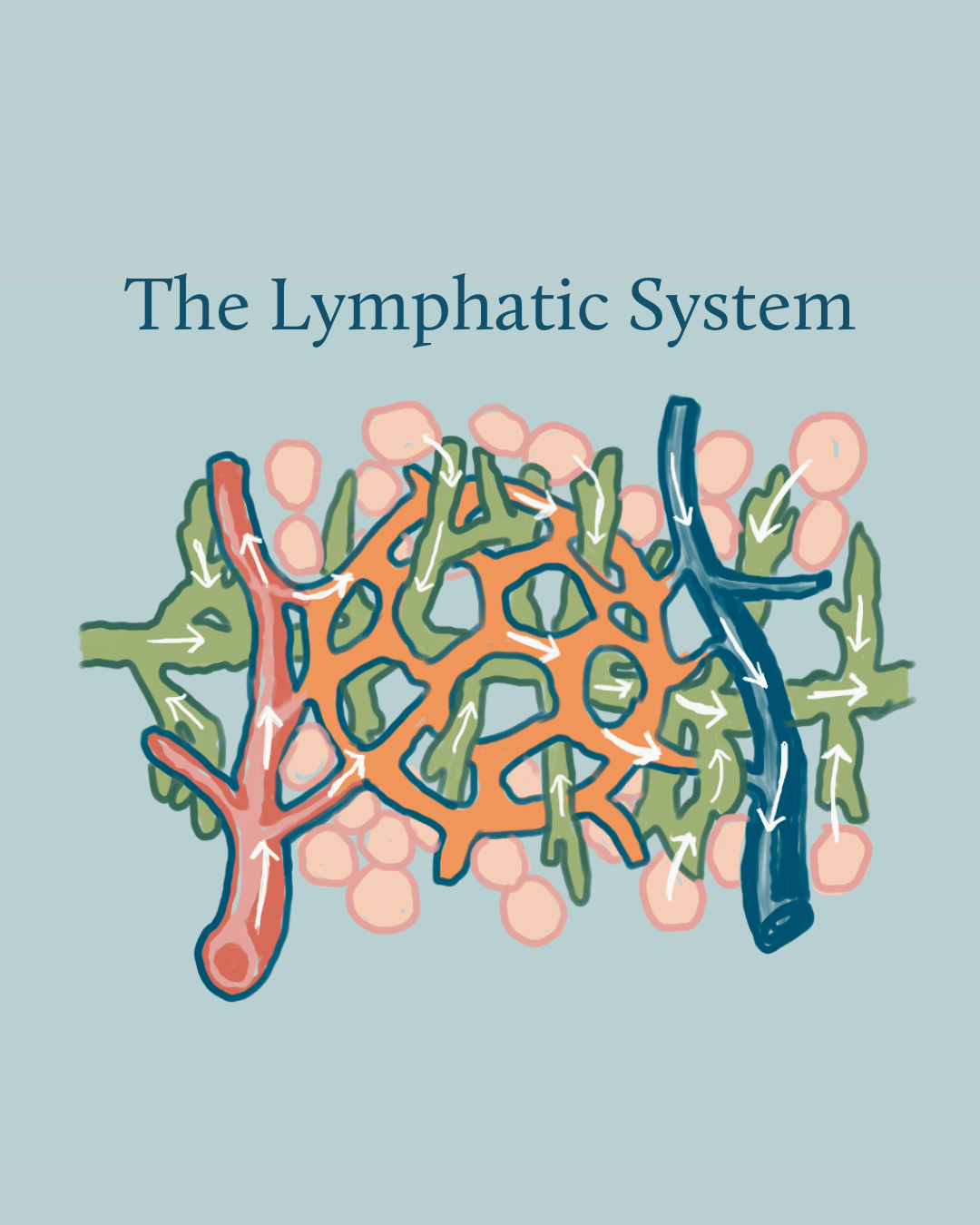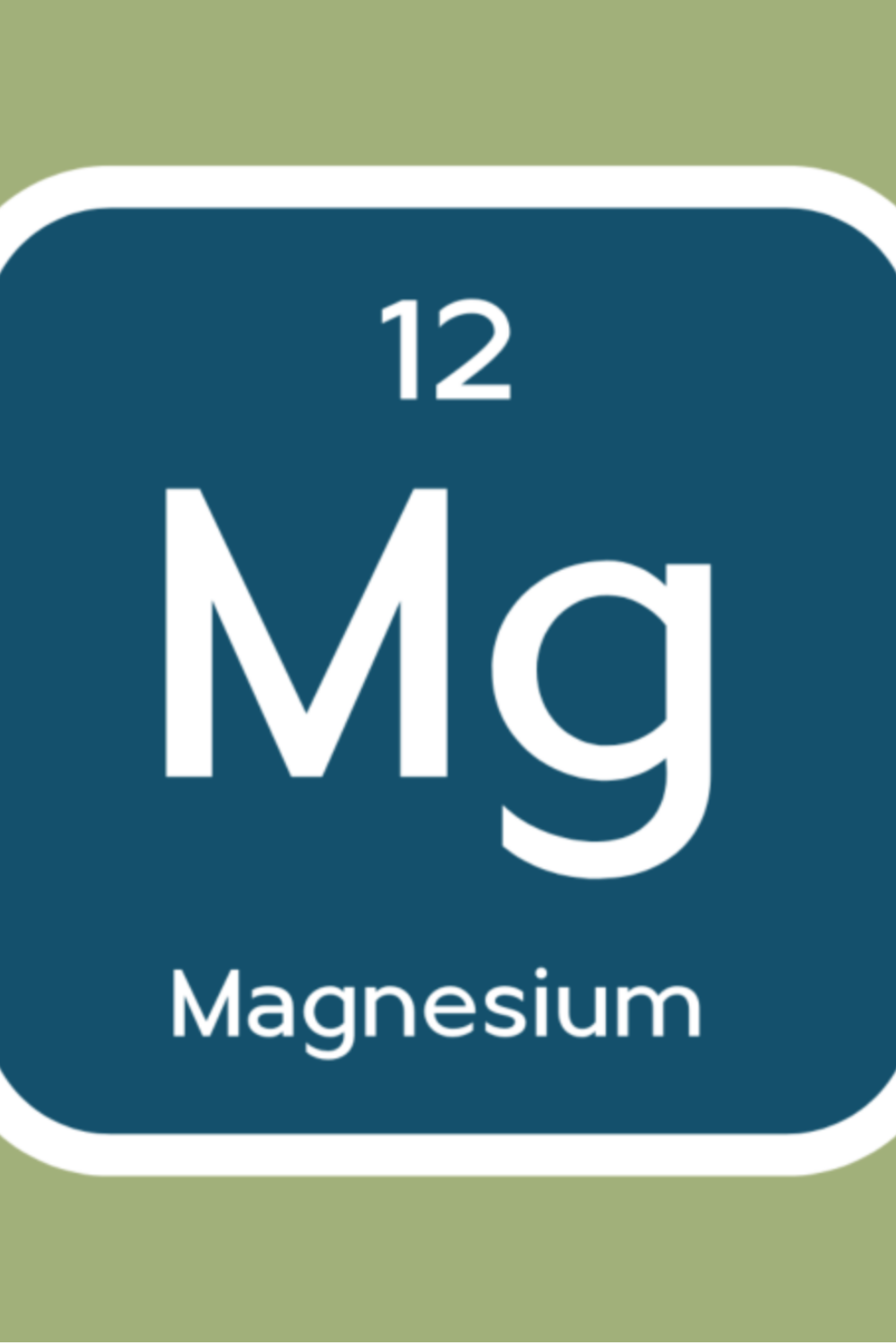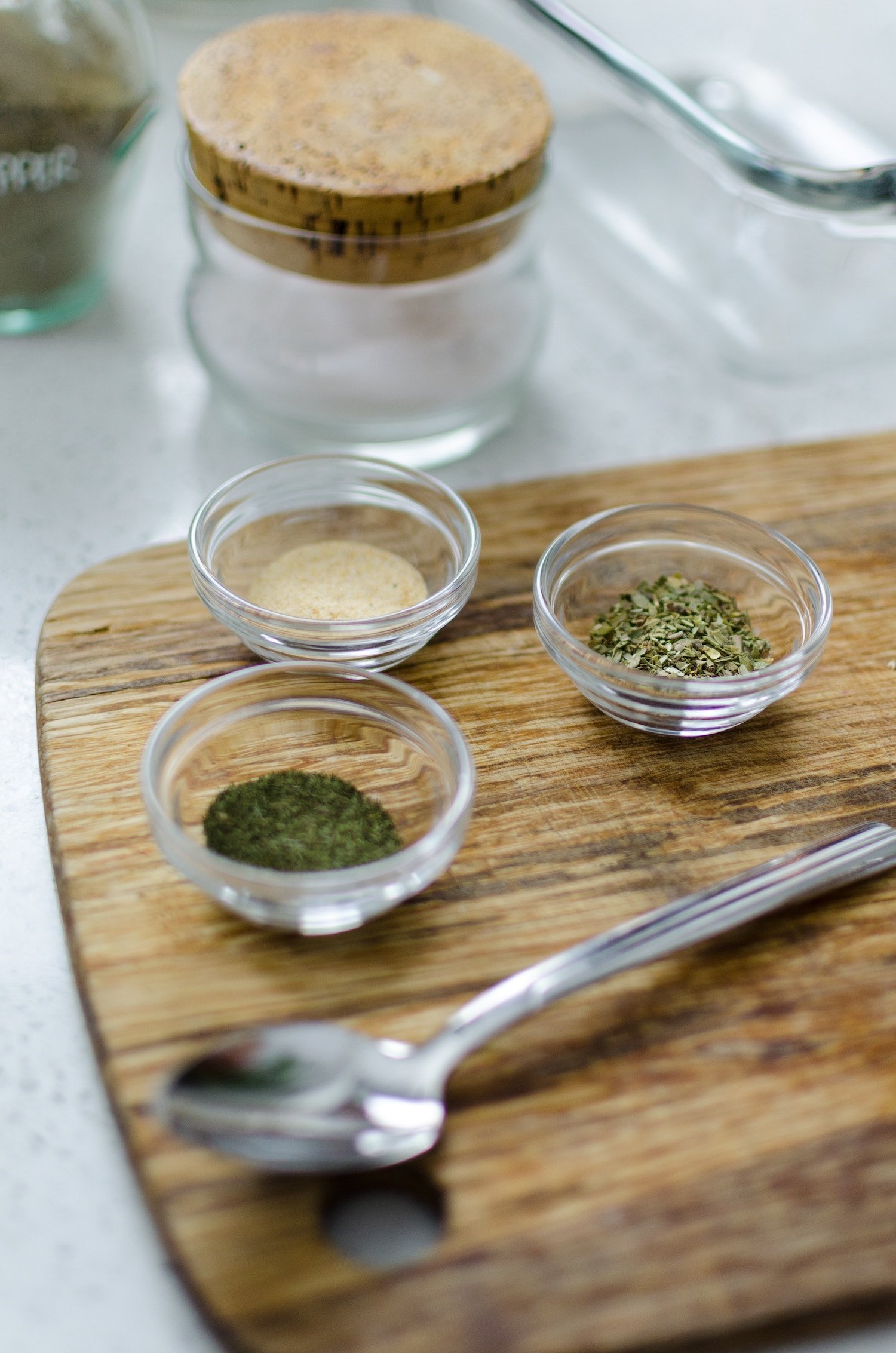Simple Ways to Care for Your Fascia
As a passionate advocate for holistic well-being, and a firm believer in the power of understanding our bodies at a deeper level, I’m going to spend some time diving into the fascinating world of fascia and lymph health in this blog post. Once I started taking care of my fascia regularly, my whole life improved dramatically.
You might be wondering, what exactly is fascia, and why should we care about it? Fascia is like the hidden superhero of our bodies. It's the intricate web of connective tissue that surrounds and supports every organ, muscle, and bone, creating a vast network that runs from head to toe. Think of it as the ultimate support system for our physical structures.
Whether you're dealing with chronic pain or health challenges, seeking to enhance your athletic performance, or simply looking to live a healthier, more energetic life where you look and feel your best each day…you’ll benefit from these 8 Simple Ways to Care for Your Fascia.
What is fascia and its purpose in the body?
Fascia plays a crucial role in our overall health. It influences our posture, flexibility, and even the way we move. When the fascia becomes tight or restricted, it can lead to a whole range of issues, from chronic pain and limited mobility to decreased circulation and even emotional stress.
Fascia is a web-like, interwoven network of connective tissue that surrounds and supports muscles, bones, organs, and other structures in the body. It is a wonderfully dynamic and adaptable system that responds to changes in the body, such as changes in posture or movement. Fascia also contains nerves, and are incredibly sensitive - particularly to stress, which can cause fascia to become stiff, and tighten. However, when the fascia is healthy and functioning properly, it provides support and protection to the body's structures, while allowing for movement, stability, and flexibility.
How is fascia connected to the lymphatic system?
The lymphatic system, often referred to as the body's drainage system or second circulatory system, works hand in hand with the fascia and is also dependent on healthy fascia for proper function. It is made up of lymph nodes, vessels, and organs and helps remove waste, toxins, and excess fluids from our tissues, keeping our bodies clean and functioning optimally. The lymphatic system is critical for maintaining a healthy immune system.
The lymphatic vessels and nodes are embedded within the fascia, and movement of the fascia is essential for the proper circulation and drainage of lymphatic fluid. When the fascia becomes restricted or damaged, it can impede the flow of lymphatic fluid, leading to a buildup of toxins and waste in the body. This can weaken the immune system and leave the body more susceptible to illness and disease.
It is important to realize that the health of the lymphatic system is closely tied to the health of the fascia. If your fascia isn’t healthy, your lymphatic system doesn't function well, no matter how much you dry brush or rebound. A sluggish and congested lymphatic system, compromises our immune system and will leave us feeling bloated, stiff, fatigued, unwell, and often experiencing the many symptoms of Mast Cell Activation Syndrome (MCAS). Through various techniques such as myofascial release, lymphatic drainage, targeted exercises, massages, and supplements, you can unlock the potential of these systems and experience profound shifts in how you look and feel - both physically and emotionally.
Adhesions: the cause of stiffness in fascia
Fascial adhesions and stiffness are common issues that can affect the health and mobility of our bodies. Fascia adhesions refer to areas of abnormal sticking or binding together of fascial layers or structures. Fascia, which is a connective tissue, is meant to be smooth, pliable and flexible, allowing for smooth movement and optimal function of muscles, organs, and other structures. However, due to various factors such as injury, trauma, infection, toxicity, inflammation, or repetitive movements, the fascial layers can develop adhesions and become stiff, inflexible, or bound up.
These adhesions create areas of restriction and tension within the fascia, leading to stiffness, limited range of motion, restricted blood flow, compensation patterns in the body, pain that travels from one area to another, cellulite, and many of the symptoms of fibromyalgia. Think of fascia adhesions as sticky spots, knots, or scar tissue within the fascial network that sits on top of muscles and organs. They can cause discomfort, pain, and a sense of tightness or stiffness in the affected areas.
What makes your fascia stiff?
Stiffness in the fascia can occur for multiple reasons. One common cause is a lack of movement or prolonged immobility. When we spend long periods in one position, such as sitting or lounging for hours, the fascia can become less pliable and lose its ability to glide smoothly. This can result in stiffness and a feeling of tightness. Studies show that it only takes 4 hours of sitting for fascia to become stiff. One of the best ways to prevent adhesions from developing is to stand and move around each hour, even if for a few minutes.
Adhesions can develop as a result of injury, surgery, inflammation, or chronic stress (of all types) and tension. Repetitive strain or compensation patterns on certain muscles or joints, commonly seen with Ehlers Danlos Syndrome (EDS) and hypermobility, can also contribute to fascia stiffness. When tissues are damaged or inflamed, the body's natural healing response can lead to the formation of scar tissue and adhesions within the fascia.
Fascial adhesions and stiffness can have a cascading effect on the body. Restricted fascia can alter biomechanics, create imbalances, and put strain on other structures, such as muscles and joints. This can lead to compensatory movements, pain, and further limitations in mobility. These adhesions are what further restrict movement and contribute to pain and stiffness. They also can restrict the movement of lymphatic fluid, leading to lymphatic congestion and impaired lymphatic and overall health.
What does metaphysics say about “stiff fascia”?
In the metaphysical healing community, fascia becoming stiff is considered to be more than just a physical phenomenon. It is believed that there is a deeper, energetic or emotional aspect to the stiffness or tightness in the fascia.
Metaphysically speaking, the fascia is seen as a repository of stored emotions, traumas, and energetic blockages. When the fascia becomes stiff or restricted, it is believed to be a reflection of unresolved emotional or energetic imbalances within the body. What you feel becomes stored in the structured cellular matrix within your fascia and lymph.
From this perspective, the fascia acts as a sort of energetic armor, protecting us from fully experiencing and releasing past traumas or negative emotions. It is thought that when we hold onto these unresolved energies, they can manifest as physical tightness, tension or discomfort in the fascia.
In order to address this metaphysical understanding of fascial stiffness, the focus often shifts towards energy healing practices and modalities like Reiki, acupuncture, chakra balancing, rolfing, ingesting energetic imprinted remedies, or other forms of energetic mind-bodywork. The goal is to not only address the physical tension in the fascia but also to release and transmute the underlying emotional or energetic blockages. This is why it’s common to have emotional releases when working with the fascia or lymphatic systems. Everything is connected.
Lyme, Mold, MCAS, Biofilms and Fascia Health
Biofilm, like is seen with chronic antibiotic usage, mold biotoxin illness, candida overgrowth, and Lyme Disease, can also impair fascia health. Chronic or excessive biofilm formation is one cause of adhesions within the fascia, as its sticky matrix structure becomes enmeshed within the fascia structure and binds it up. This causes lymphatic health to suffer even more, as flow is restricted through the stubborn fascia. Stealth infections are able to proliferate unchecked by the immune system hidden behind the biofilm. This is another reason why some people feel terrible when they start to work on their fascia health: their biofilm becomes disturbed, pathogens are freed into the bloodstream and surrounding tissues, and the immune system responds.
What are the symptoms of restricted lymphatic flow?
As mentioned earlier, when the lymphatic system is not functioning properly, it can lead to a buildup of toxins and waste, which can lead to a variety of symptoms.
Here are 10 of the symptoms of poor lymphatic flow:
Swelling: One of the most common symptoms of poor lymphatic flow is swelling or edema. This can occur in the limbs, face, or other parts of the body and may be accompanied by a feeling of heaviness or tightness.
Fatigue: If the lymphatic system is not functioning properly, the buildup of toxins in the body can cause fatigue and a general lethargy.
Infections: The lymphatic system helps to fight off infections by removing harmful bacteria, viruses and parasites from the body. When the lymphatic system is not functioning properly, it can leave the body more susceptible to infections.
Skin problems: Poor lymphatic flow can lead to skin problems such as dryness, itching, hives, acne, and rashes. The skin may also appear puffy or swollen.
Digestive issues: If waste and toxins are not properly removed from the digestive system, it can lead to digestive issues such as constipation, bloating, and abdominal pain.
Headaches: A buildup of toxins in the body can lead to headaches and migraines.
Joint pain: Poor lymphatic flow can lead to an accumulation of fluids in the joints, which can cause pain and stiffness.
Weight Fluctuations: Unexplained changes in weight, both gain and loss, despite maintaining a consistently clean diet and activity level.
Increased Sensitivity to Foods & Environment: Heightened sensitivity to certain foods, and adverse reactions like asthma, bloating, digestive discomfort, or skin issues.
Inner Tension & Feelings of Overwhelm: Persistent feelings of tension or tightness in the body, especially in the neck, shoulders, or jaw.
It's important to note that these symptoms can be caused by a variety of factors, and not all of them may be related to poor lymphatic flow and adhesions in your fascia.
8 Simple Ways to Care for Your Fascia
The human body is a complex and intricate system, made up of many interconnected parts that work together to maintain health and well-being. Research has shown that certain types of manual therapies, such as myofascial release and lymphatic drainage, can help to improve lymphatic flow and support immune health leading to a reduction of the symptoms listed above.
Here are 8 easy tips to help mitigate and remove adhesions in your fascia and improve your overall lymphatic health:
Myofascial release: Myofascial release is a technique that involves applying sustained pressure to the fascia to release adhesions and restore mobility. This technique can be performed by a trained therapist using their hands, or with the help of specialized tools such as foam rollers, massage balls, or fascia blasters. By releasing adhesions and improving the mobility of the fascia, myofascial release can help to enhance lymphatic circulation and reduce lymphatic congestion.
Stretching: Stretching can help to improve the flexibility and mobility of the fascia, which can in turn reduce the formation of adhesions. Incorporating regular stretching into your routine can help to keep your fascia healthy and prevent lymphatic congestion.
Massage: Massage can be a helpful technique for releasing adhesions and improving lymphatic flow. A skilled massage therapist can use a variety of techniques to apply pressure to the fascia and release tension and adhesions. Massage can also help to reduce inflammation and promote relaxation, which can further enhance lymphatic circulation.
Chinese Cupping: This ancient technique involves placing glass or silicon cups on the skin, creating a vacuum effect that gently draws the skin and underlying tissues upward to draw fresh blood into the area. My favorite technique is to glide the cups back and forth over certain areas of the body to gently break up fascial adhesions. Cupping therapy can help stimulate the body’s natural healing response, release tension and adhesions within the fascia, promoting improved circulation, lymphatic flow, and overall tissue health. This reduces pain, inflammation, and stiffness, and smooths your skin.
Exercise: Regular exercise can help to improve lymphatic circulation and prevent the formation of adhesions in the fascia. Because the lymphatic system does not contain its own pump, it relies heavily on movement to circulate lymph. Incorporating both cardiovascular exercise and strength training into your routine can help to enhance lymphatic flow and keep your fascia healthy.
Maintain an Active Routine: In addition to daily exercise, it is important to spread activity throughout your day. Be sure to stand and walk a few minutes every hour.
Posture: While sitting and standing, be aware of your posture and focus on its maintenance. Inadequate posture can cause an overcompensation, increasing the tightness in your fascia and the development of adhesions.
Hydration: Adequate hydration is essential for maintaining lymphatic health. When you are dehydrated, your lymphatic fluid becomes thicker and more viscous, which can increase the risk of adhesions and lymphatic congestion. Drinking plenty of clean water with trace minerals and electrolytes added throughout the day can help to keep your lymphatic fluid flowing more smoothly and reduce the risk of adhesions in the fascia.
How to take care of your fascia:
Learning how to take care of your fascia and lymphatic systems can help you feel and look your best. You’ll look and feel younger. Your skin will be smoother (reduces cellulite), you’ll have less pain, more mobility in your muscles, shorter recovery times, and less swelling and bloating.
By incorporating techniques such as myofascial release, stretching, massage, consistent daily activity and exercise, a focus on proper posture, and hydration into your routine, you can help to remove adhesions and improve the mobility of the fascia, which will in turn enhance lymphatic circulation and promote overall lymphatic health.
On the flip side, however, when you combine unaddressed adhesions in the fascia with toxicity (especially heavy metals and pesticides), parasites, and pathogens you’ll be more prone to the formation of biofilms around your body.
Take caution if you are already sensitive!
If you’ve been sick for a long time, or suspect you could have really sluggish lymph with a lot of adhesions in your fascia, then it’s important to work with a practitioner on your drainage pathway and immune health before trying manual therapies, otherwise you could have a flare up of symptoms and temporarily feel even worse. This is because the release of toxic and infectious waste, plus the release of any metaphysical blocks that were in the adhesion area can overwhelm your body and put you into a healing crisis.
In our protocols, we always focus on the foundations of healthy drainage pathways before moving to busting any biofilms.
Overcome Your Chronic Symptoms & Heal Holistically
Are you looking to get to the root cause of your symptoms? We can help you.
We use holistic approaches and functional medicine lab testing to investigate what is triggering your chronic symptoms so you can address them at their source and start to feel better faster. Our health coaches are masters at guiding the healing of multiple root causes in a personalized order that gets you wellness results that last. We also help you maintain good health and minimize your disease risks.
by sarah southerton
Certified Integrative Health Practitioner (IHP2) & Functional Medicine Health Coach
I specialize in helping people heal chronic illnesses and achieve optimal health. After my own battle with Ehlers Danlos Syndrome (EDS), Lyme disease, Mast Cell Activation Syndrome (MCAS) and Post Orthostatic Tachycardia Syndrome (POTS), I was thrust into the world of alternative medicine, herbal healing, and low-tox/low-stress living. I have since restored my health and no longer suffer with debilitating symptoms and I’m passionate about help other people who are suffering, so they can feel better a lot faster than I did.
Disclaimer: The information on this website is for general information purposes only. Nothing on this site should be taken as healthcare advice for any individual case or situation. This information is not intended to create, and receipt or viewing does not constitute, an healthcare professional-patient relationship. We do our best to keep information accurate and up to date, however mistakes do happen, and we cannot make guarantees regarding the accuracy of our information. We are not liable for any information on this website or your reliance upon it.
































